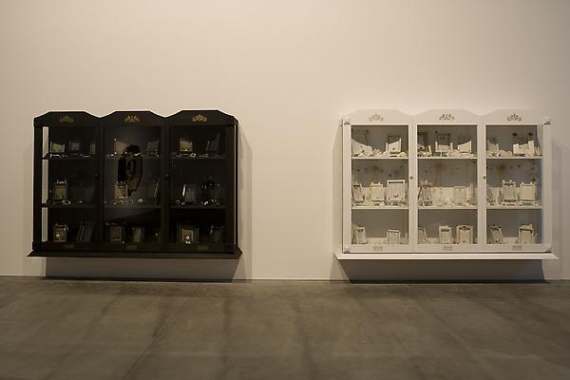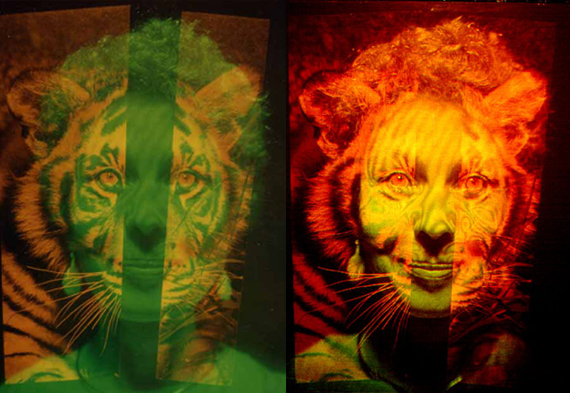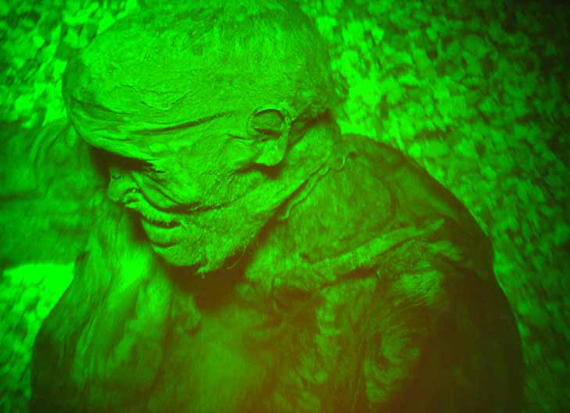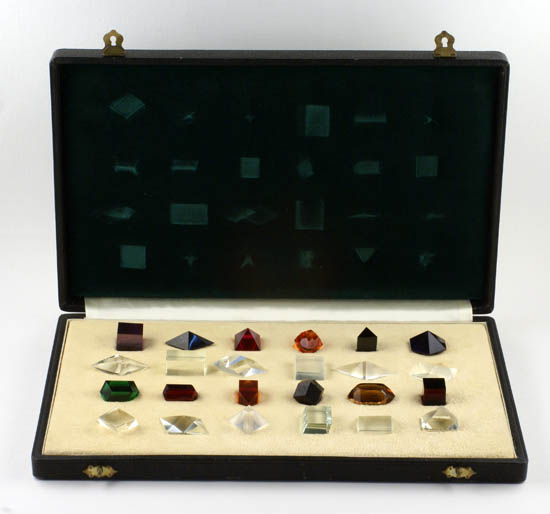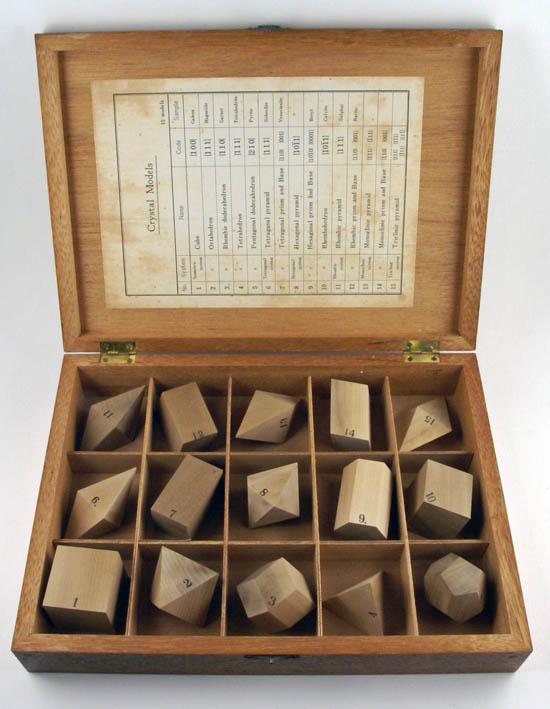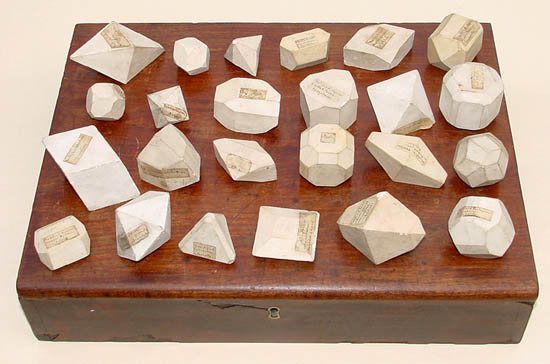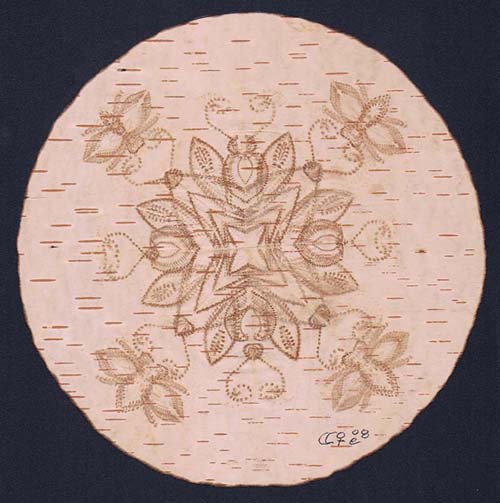Dario Robleto was born in 1972 in San Antonio, Texas; he lives and works in San Antonio. In his sculptures, Robleto uses rare and archaic materials, including vinyl records, dinosaur fossils, and impact glass formed by meteorites or nuclear explosions. Taking his cue from disc jockeys' music sampling, Robleto refers to history, memory, nostalgia, chance, and hope in order to understand the present. Sampling is a method of composing something new from existing sources in a nonlinear manner. To Robleto, this is a philosophy rooted in American history, rather than just a technique. His sculptures originate from his extensive research around an event, which eventually brings him to identify specifically evocative materials and forms. While his earlier work focused mostly on the history of rock and pop music and its relationship to official history and our personal lives, much of Robleto's more recent work references the experience of war, raising such questions as "who is the enemy?" (Scope).
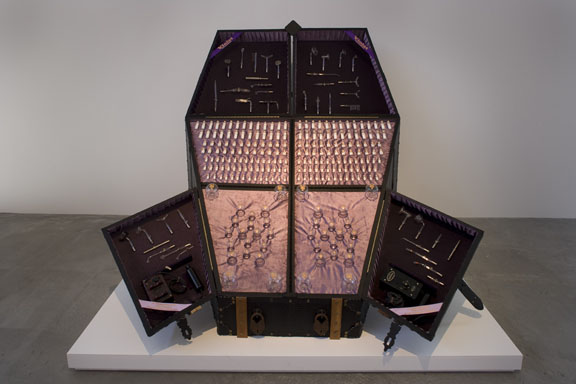
A Homeopathic Treatment For Human Longing, 2008
Glass vials, vintage glass electrode wands, 19th c. bloodletting cupping glass, various home made homeopathic remedies (sound of glaciers melting, voice of oldest to ever live, last heartbeats of loved one, million year old blossom, million year old raindrop, deceased lovers heartbeats, extinct animal sounds, extinct languages), various custom ordered remedies made by professional homeopath (black amber, willow, tears, mammoth hair, glacial runoff, voice of oldest widow, black swan bone dust, Silvia Plath's voice), velvet, silk, leather ribbon, brass, iron, cork, pine, typeset.
Love Has Value Because It's Not Eternal, 2008
Hand blown glass beakers, stretched audio tape of field recordings of the sound of glaciers melting (2005-06) intertwined with audio tape of various lovers recording their partner's heartbeats as they reflected on each other, ground passion flower, amber, eternal flower, resurrection plant, silk, satin, leather, ribbon, brass, iron, cork, pine, typeset.
The Boundary of Life Is Quietly Crossed (left), 2008
The Ark of Frailty (right), 2008
The Boundary of Life Is Quietly Crossed, 2008
Ink dyed poplar, typeset on cardstock, hair lockets made of stretched and curled audio tape recordings of supercentenarians (human living to 110 or older), 19th c. hair flowers, lace and fabric from widows' mourning dresses, colored paper, silk, antique ribbon, homemade paper, willow.
Ark of Frailty, 2008
Poplar, typeset on cardstock, hair lockets made of stretched and curled audio tape recordings of "Lazarus species" (species that are rediscovered alive after being classified extinct) in the wild, 19th c. hair flowers, 19th c. dried flowers, lace and fabric from widows' mourning dresss, colored paper, silk, antique ribbon and buttons, carved animal bone buttons, homemade paper, willow, ash, white oak, milk paint, glass.
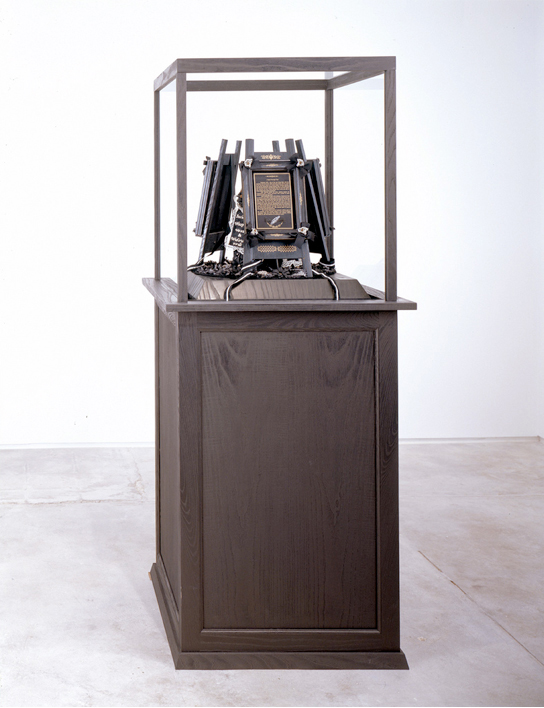
The Pause Became Permanence, 2005-2006
Ink dyed willow and ash, hair lockets made of stretched and curled audio tape recordings of the last known Confederate and Union Civil War soldier's voices, excavated and melted shrapnel from various wars, hair flowers braided by war widows, mourning dresses, colored paper, silk, ribbon, milk paint, glass, typeset.
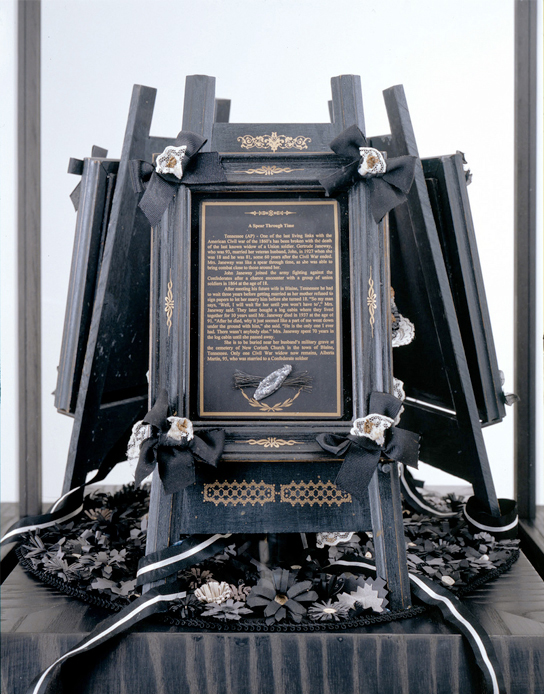
The Pause Became Permanence (detail), 2005-2006

